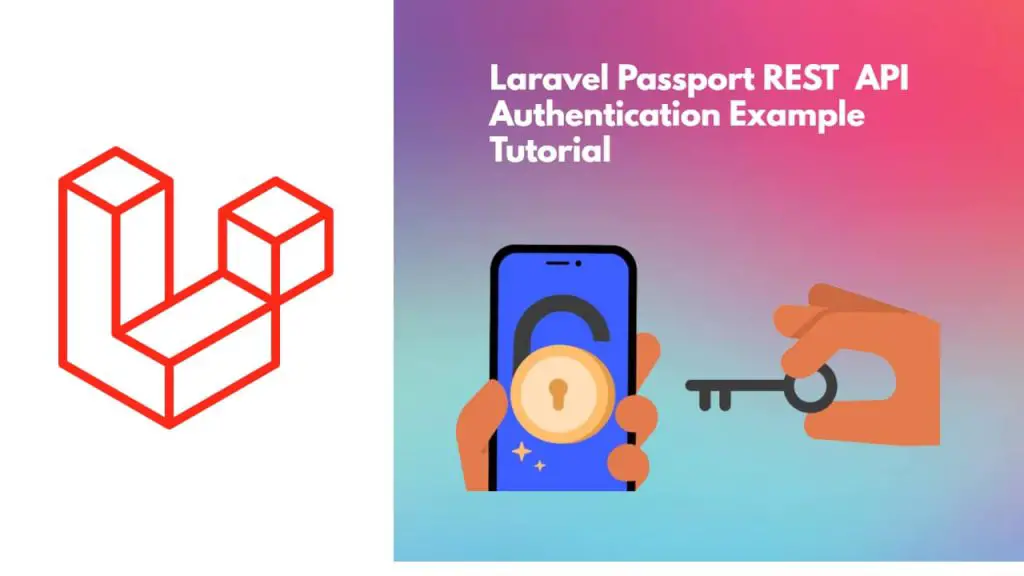Passport is a package that provides OAuth2 server implementation for Laravel 11 applications. It allows developers to easily create REST APIs for authentication in Laravel applications by issuing access tokens and managing their revocation.
Here are the steps to create a REST API using Passport auth via token-based authentication:
Step 1: Install Laravel 11
Start cmd or terminal and run the following command to install laravel 11 setup:
composer create-project --prefer-dist laravel/laravel passportAuth
Step 2: Configure Database
Open .env file and configure database in it; something like this:
DB_CONNECTION=mysql DB_HOST=127.0.0.1 DB_PORT=3306 DB_DATABASE=here your database name here DB_USERNAME=here database username here DB_PASSWORD=here database password here
Step 3: Install Passport Auth
To install passport auth package, use the following command:
cd passportAuth php artisan install:api --passport
Step 4: Configure Passport Auth
Open user.php model file from App/Models folder and configure passport auth in it; something like this:
<?php
namespace App\Models;
use Illuminate\Database\Eloquent\Factories\HasFactory;
use Illuminate\Foundation\Auth\User as Authenticatable;
use Illuminate\Notifications\Notifiable;
use Laravel\Passport\HasApiTokens;
class User extends Authenticatable
{
use HasFactory, Notifiable, HasApiTokens;
/**
* The attributes that are mass assignable.
*
* @var array
*/
protected $fillable = [
'name',
'email',
'password',
];
/**
* The attributes that should be hidden for serialization.
*
* @var array
*/
protected $hidden = [
'password',
'remember_token',
];
/**
* Get the attributes that should be cast.
*
* @return array
*/
protected function casts(): array
{
return [
'email_verified_at' => 'datetime',
'password' => 'hashed',
];
}
}
Next open auth.php file from config folder and add api driver in it; something like this:
[
'web' => [
'driver' => 'session',
'provider' => 'users',
],
'api' => [
'driver' => 'passport',
'provider' => 'users',
],
],
Step 5: Run Migration
To create tables into a database, use the following command:
php artisan migrate
Step 6: Define APIs Route
Open web.php file from routes folder and define authentication routes in it to handle auth requests; something like this:
use App\Http\Controllers\API\PassportAuthController;
Route::post('register', [PassportAuthController::class, 'register']);
Route::post('login', [PassportAuthController::class, 'login']);
Route::middleware('auth:api')->group(function () {
Route::get('get-user', [PassportAuthController::class, 'userInfo']);
});
Step 7: Generate Auth Controller
To generate controller class for authentication, use the following command:
php artisan make:controller Api\PassportAuthController
To handle authentication logic with passport, create some methods in App\Http\Controllers\API\PassportAuthController.php file, like the following:
<?php
namespace App\Http\Controllers\API;
use Illuminate\Http\Request;
use App\Models\User;
class AuthController extends Controller
{
/**
* Registration Req
*/
public function register(Request $request)
{
$this->validate($request, [
'name' => 'required|min:4',
'email' => 'required|email',
'password' => 'required|min:8',
]);
$user = User::create([
'name' => $request->name,
'email' => $request->email,
'password' => bcrypt($request->password)
]);
$token = $user->createToken('PassportAuth')->accessToken;
return response()->json(['token' => $token], 200);
}
/**
* Login Req
*/
public function login(Request $request)
{
$data = [
'email' => $request->email,
'password' => $request->password
];
if (auth()->attempt($data)) {
$token = auth()->user()->createToken('PassportAuth')->accessToken;
return response()->json(['token' => $token], 200);
} else {
return response()->json(['error' => 'Unauthorised'], 401);
}
}
public function userInfo()
{
$user = auth()->user();
return response()->json(['user' => $user], 200);
}
}
Step 8: Test Application
To test application, use the following command to start application server:
php artisan serve
You can now test your API endpoints using tools like Postman or cURL. Make sure to include the generated access token in the request headers; something like this:
'headers' => [
'Accept' => 'application/json',
'Authorization' => 'Bearer '.$accessToken,
]
Conclusion
Congratulations! You’ve successfully set up and made rest API for user authentication using Passport auth in laravel 11.
